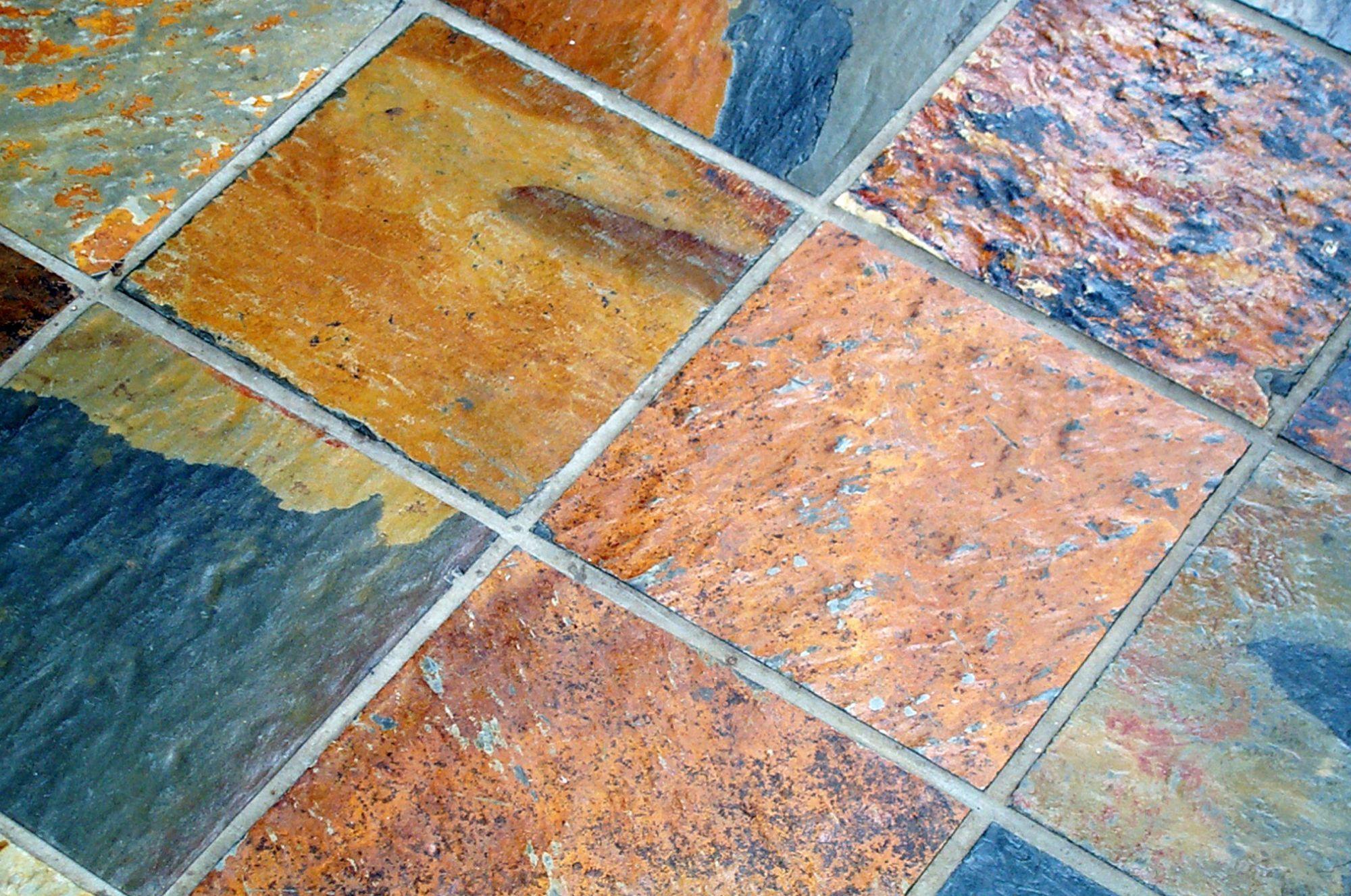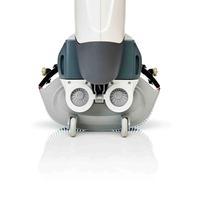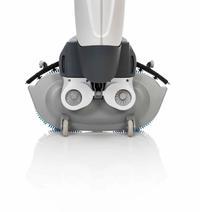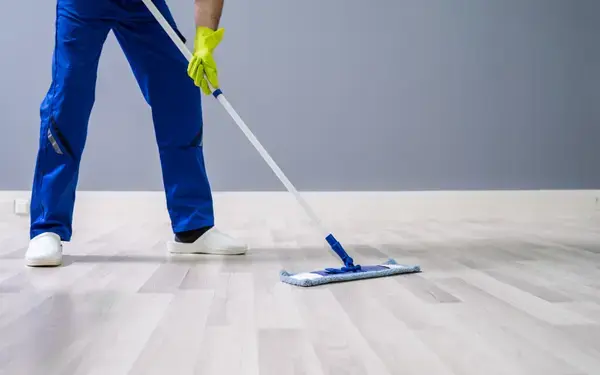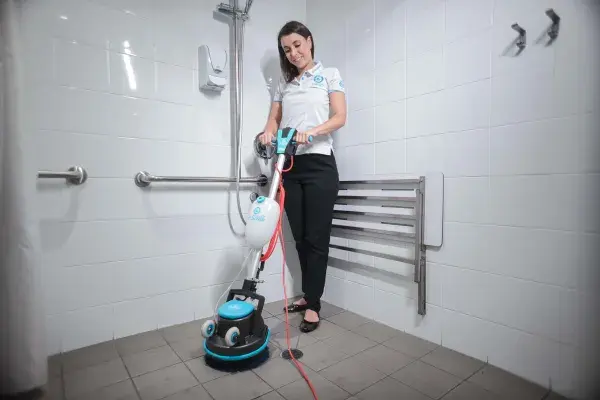You are reading: How To Clean Slate Floors
In the most general terms, there are two different types or processes for cleaning Slate floors. The first and most common is what we call “Maintenance Cleaning” or light cleaning. This is a regular cleaning process (i.e. daily or weekly) and is designed to maintain a good level of floor hygiene and appearance. The second type of floor cleaning is referred to as “Deep Cleaning”, where you apply a more intensive process to achieve a substantial improvement in floor appearance.
Here we break down these two types of floor cleaning. We have focused on cleaning with the i-mop; however, you could apply these steps with most types of floor cleaning machines.
Watch this video to learn more about the Orbot floor scrubber range.
Maintenance cleaning: for slate floors
1. Dust mop or sweep floor to remove dust, hair and debris.
2. Use safety signage to warn passers by that cleaning is in progress and floors may be slippery.
3. Fill i-mop solution tank with water
4. If required, Add chemicals (Note: Unless your floor is particularly dirty, we recommend only adding chemical every 2nd time you clean your vinyl floor. Regular cleaning with just water helps ensure you avoid soil-attracting chemical residue build-up):
4.1 Insert the appropriate i-dose pod into the i-dose chamber:
4.1.1 Bathroom floors: use i-dose E33 Washroom cleaner (Pink)\ ii. Kitchen or workshop floors: use i-dose E73 Degreaser (Green)\ iii. General areas: use i-dose E33 Sanitary Floor cleaner (Blue)
4.2 Press i-dose injector button to dispense chemical into tank.
4.3 If you do not have an i-dose tank, manually dilute chemical into i-mop tank according to chemical manufacturer's recommendations.
5. Select and attach brushes. Refer to the i-mop Accessories Guide for further information on brush options, however the most common brushes for cleaning Slate floors are the regular blue brushes.
6. Lower the i-mop deck and turn i-mop control knob to normal cleaning mode (brush, water & vacuum) to begin cleaning the floor. Refer to our Operator Training Video for detailed Operator instructions. For maximum efficiency, cleaning in long straight lines, overlapping slightly.
7. Anytime you need to refill the solution tank, ensure you empty the recovery tank.
Read: Using the i-mop to clean my interior and exterior concrete floors at home.
Deep cleaning: slate floors
1. For best results we strongly recommend you have a Deep Scrub Bracket fitted to your i-mop (only available for i-mop xl/xxl).
2. Dust mop or sweep vinyl floor to remove dust, hair and debris.
3. Use safety signage to warn passers by that cleaning is in progress and floors may be slippery.
4. Fill i-mop solution tank with water
5. Add chemicals:
5.1 Insert the appropriate i-dose pod into the i-dose chamber:
5.1.1 Bathroom floors: use i-dose E33 Washroom cleaner (Pink)\ ii. Kitchen or workshop floors: use i-dose E73 Degreaser (Green)\ iii. General areas: use i-dose E33 Sanitary Floor cleaner (Blue)
5.2 Press i-dose injector button to dispense chemical into tank.
5.3 If you do not have an i-dose tank, manually dilute chemical into i-mop tank according to chemical manufacturer's recommendations.
6. Select and attach brushes. Refer to our Accessories Guide for further information on brush options, however the most common brushes for cleaning slate are either the regular blue brushes, or the hard red brushes. The Hard brushes will provide a more aggressive clean.
a. Note: If you are trying to strip a slate floor, we recommend using black pads and pad drives on your i-mop.
7. Ensure scrub bracket is lowered to lift the squeegee off the floor
8. Lower i-mop deck and turn i-mop control knob to deep scrub cleaning mode (brush & water, no vacuum). Refer to our Operator Training Video for detailed Operator instructions.
9. Begin scrubbing the vinyl floor, ensuring enough chemical is applied to keep the floor wet for at least 5 minutes. It is recommended to deep clean the floor in sections of no more than 20-30 sqm at a time.
10. Once you have sufficient chemical on the floor you can switch to scrub only mode and continue agitation, ensuring floor does not dry out. Switch to brush & water mode again to apply more solution if floor is drying out.
11. For best results give chemical at least 10 minutes of dwell time while completing at least 2 scrub passes over each section of floor.
12. When you are ready to extract soiling, raise the scrub bracket so the i-mop squeegee is in full contact with the floor. Switch i-mop to brush/vacuum or brush/water/vacuum mode.
13. Remove soiling from the floor by cleaning the entire tiled floor as you would for a regular maintenance clean.
Important: If you have refilled your solution tank with more cleaning solution while scrubbing, remember that you will have to empty your recovery tank partway through to ensure it does not over-fill.
Click here to learn more about the Orbot range.

Common Questions Answered
1. Can you use a steam cleaner on slate floors?
Answer: Steam cleaners are generally not recommended for slate floors, as the high heat and moisture can damage the surface, especially if the slate is not properly sealed. It’s better to use a mop with a mild cleaning solution designed for natural stone.
2. How do you protect slate floors from stains?
Answer: Sealing your slate floors is the best way to protect them from stains. Use a high-quality stone sealer to create a barrier against spills, dirt, and moisture. Reseal the floors as needed, typically every 1-2 years, depending on the level of foot traffic.
3. What cleaning products should be avoided on slate floors?
Answer: Avoid acidic cleaners, such as vinegar or lemon juice, as they can etch the surface of slate. Instead, use pH-neutral cleaners specifically formulated for natural stone to avoid damage.
References
The Spruce – How to Clean Slate Floors
URL: https://www.thespruce.com/how-to-clean-slate-floors-1900460
SFGate – Best Ways to Clean Slate Floors
URL: https://homeguides.sfgate.com/clean-slate-flooring
StoneCare – Slate Floor Cleaning Guide
URL: https://www.stonecare.com/slate-floor-cleaning
Products Featured Inside this Article
Media and Insights
Join the movement that's changing what clean means.
Be part of a cleaner world. Get a live demo at a time that suits you.
Book a Demo